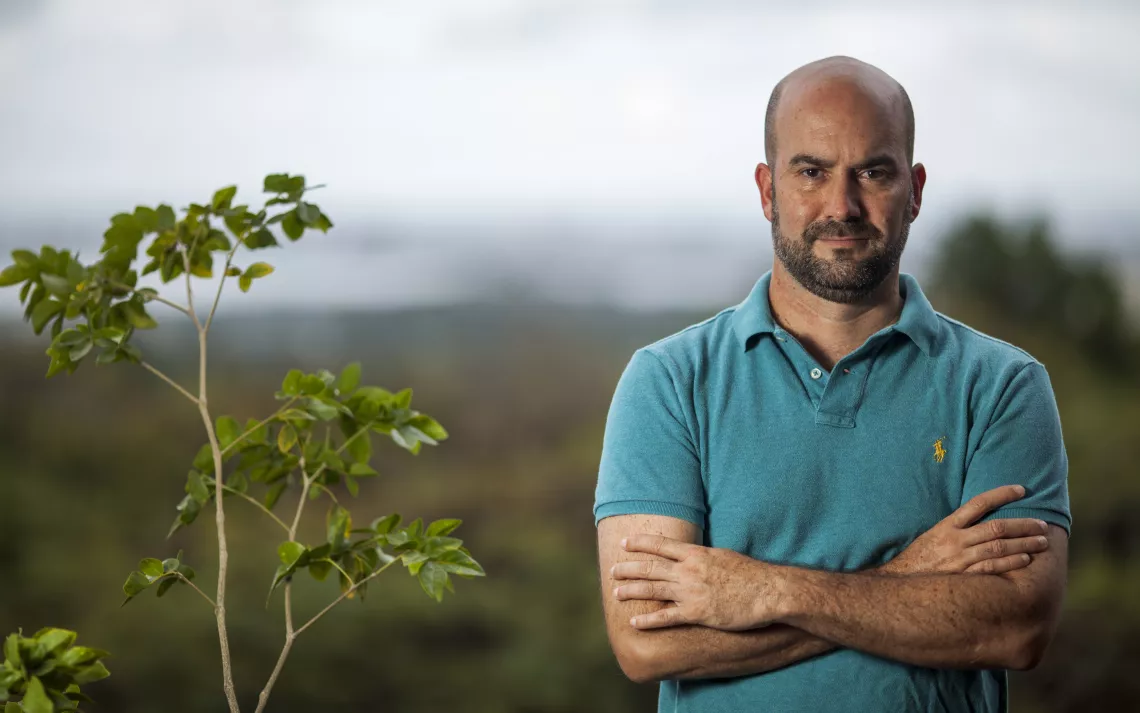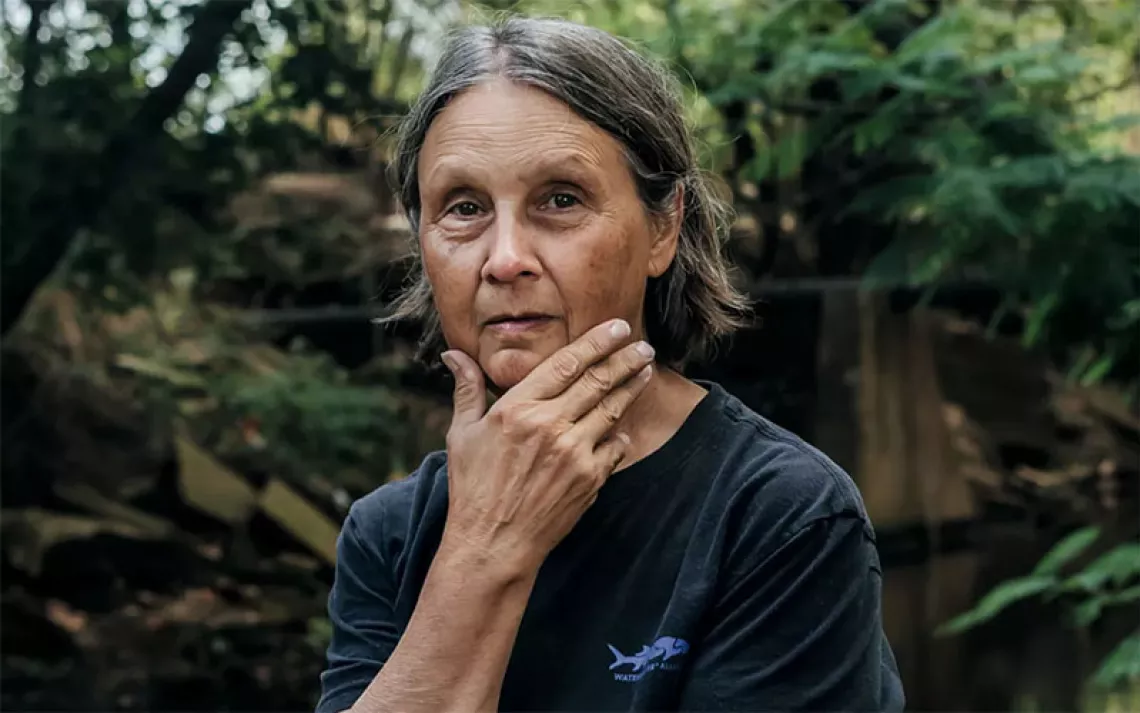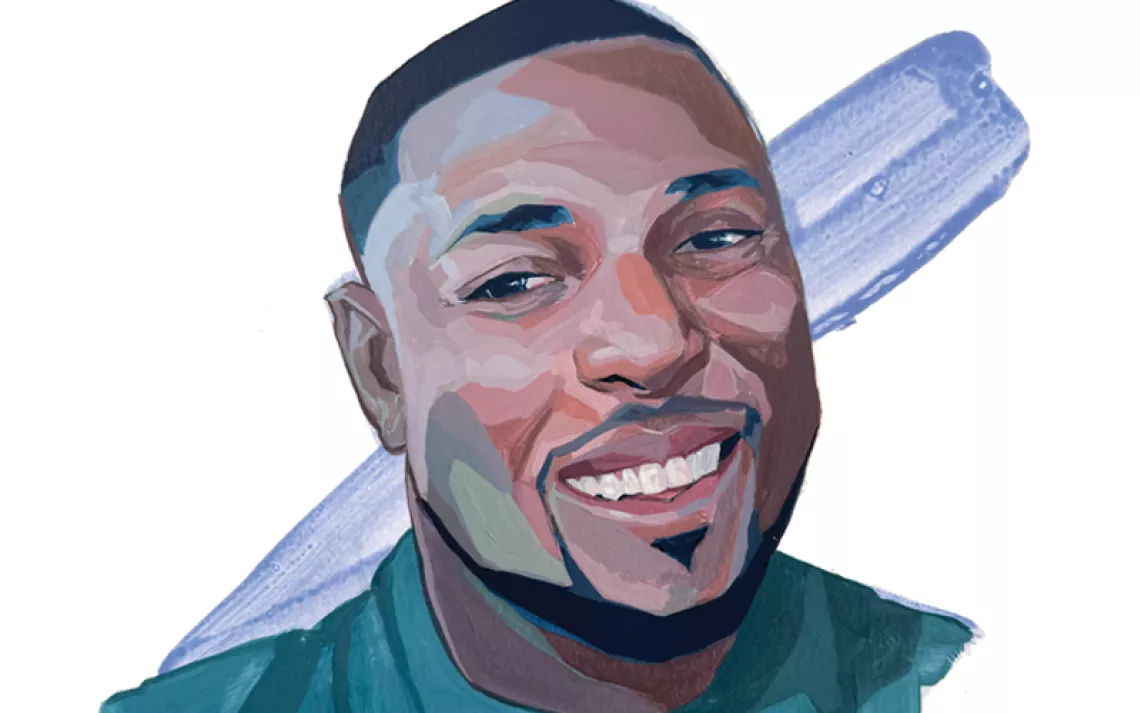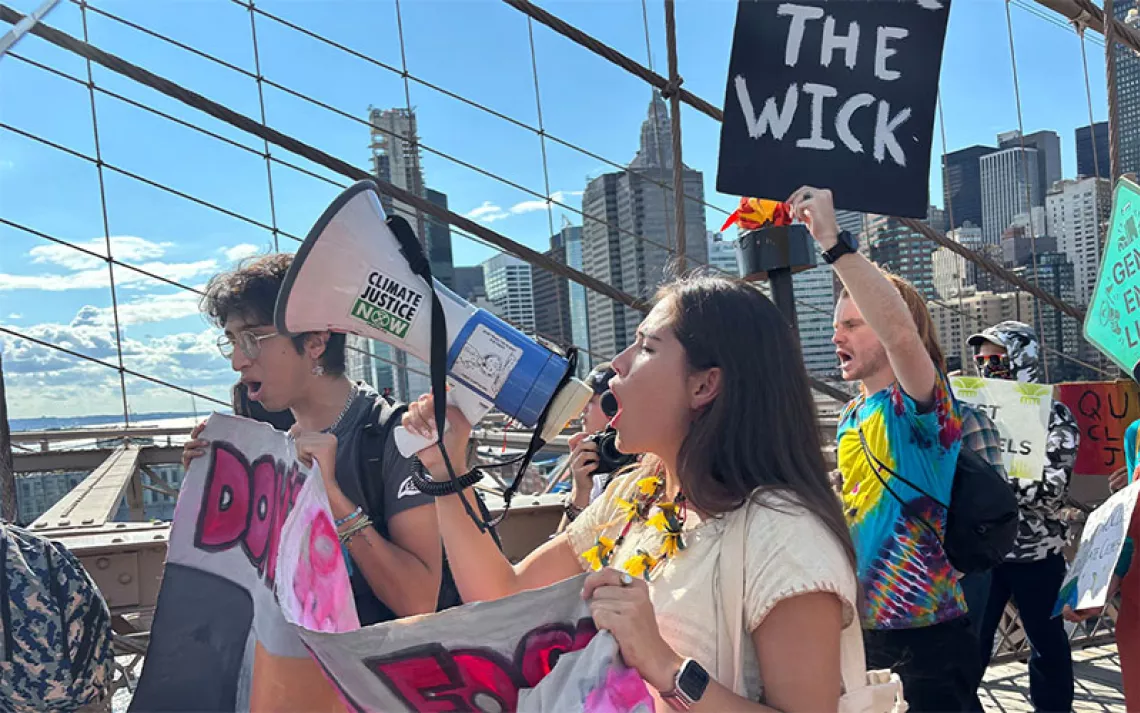Sierra Club Member Awarded Goldman Environmental Prize
Luis Jorge Rivera Herrera won a 15-year-long fight to protect Puerto Rico’s coastline.

Luis Jorge Rivera Herrera
|Photos Courtesy of Goldman Environmental Prize
Luis Jorge Rivera Herrera developed an ecological consciousness early. When he was growing up in Puerto Rico, his family owned a coconut plantation in Piñones Loiza, east of the capital of San Juan. Every weekend Rivera Herrera went with his two older brothers and his father to work the farm, which had been in the family since 1873, and, as he told SIERRA in a recent interview, he “became very attached to that land.” Then, in 1980, when he was eight years old, the territorial government used eminent domain to take the property in order to build a sewage treatment plant. The next time he returned to the farm, the trees had been cut down and “the landscape was torn apart.” Today, as an adult, Rivera Herrera recognizes that the water treatment plant was probably a beneficial use of the land, but the episode still marked him, sparking his lifelong commitment to environmental advocacy.
In the decades since, Rivera Herrera has distinguished himself as a leader in the Puerto Rican environmental community. In college he led tours at the Las Cabezas de San Juan Nature Reserve, and after graduation he did a stint with the U.S. EPA in San Juan. He and a friend co-founded an organization called Iniciativa para un Desarrollo Sustentable (The Sustainable Development Initiative) to provide free consulting services to communities fighting ill-conceived development projects. And since 1999 he has been the leading voice trying to stop two mega-resorts that were planned for the island’s Northeast Ecological Corridor, a 3,000-acre shoreline of tropical rainforests, mangroves, and undeveloped beaches.

In 2013, Rivera Herrera’s long campaign to protect the Northeast Ecological Corridor achieved victory when the territorial governor signed a law to permanently protect the corridor’s public lands and prevent the resorts from being built.
On Monday, Rivera Herrera will be recognized for his prescience and tireless advocacy when he receives the Goldman Environmental Prize, the environmental movement’s most prestigious award.
“Luis Jorge is one of these people with incredible prowess: he reads every document, he understands how people work, he knows the biology of the corridor and all of the plants and the animals,” says Camilla Feibelman, the former director of the Sierra Club’s Puerto Rico chapter who worked with Rivera Herrera for more than 10 years on the campaign against the planned resorts. “Neither of the two projects that were proposed ever got a permit, and that’s because Luis Jorge read every single document and knew all the players.”
When, in 1999, the government announced plans to build the San Miguel and Dos Mares resorts in the Northeast Ecological Corridor, Rivera Herrera was shocked. The territorial government had already conducted studies that recognized the ecological value of the shoreline—among other things, the area boasts a leatherback sea turtle nesting zone—and had recommended the establishment of a nature preserve. “So how come, within just two or three years, suddenly the planning board and the tourism agency were promoting this?” The answer, he says, had to do with campaign contributions and political connections. “The developers of these two projects were really connected to the government and to the political party that was in power at that time.”
Rivera Herrera began working with residents in seaside communities of Luquillo and Fajardo, which sandwich the stretch of undeveloped shoreline. For many years it was tough going. “We basically felt like we were fighting in the trenches,” he says. “We never felt like we were in control. We didn’t have enough time or resources to go on the offensive and really present an alternative proposal for the corridor.”
The turning point came in 2005, when the Sierra Club board—partly at the urging of Rivera Herrera and some students at the University of Puerto Rico—decided to launch a Club chapter on the island. “The real big change was the Sierra Club involvement in the campaign,” he says, quickly adding “and I’m not just saying that because you’re a reporter for SIERRA.”

With the assistance of the Club’s professional campaign staff, Rivera Herrera was able to take what had been a local fight and elevate it to an island-wide issue that eventually became a political football in the territorial congress—the Keystone XL pipeline of Puerto Rico, as it were. First, Rivera Herrera and the Sierra Club attempted to push a bill through the territorial congress to protect the corridor. The legislation failed, but the governor at the time, Aníbal Vilá, recognized that the issue had public support and in 2007 signed an executive order to protect the area.
The campaign then suffered a major setback two years later when the next governor, Luis Fortuño, repealed the corridor’s legal protection. Political observers in Puerto Rico speculated that campaign contributions from the Dos Mares resort to Fortuño might have influenced the governor’s decision, and Rivera Herrera and the Club used the controversy to ignite a new public campaign urging permanent protection. Finally, in 2012, the island’s congress uanimously passed a bill to conserve the shoreline, and the legislation was signed into law the following year.
“Luis Jorge has been there from the beginning to the end, to ensure that this important place is protected for all people in Puerto Rico, and for those who come visit us,” Feibelman says.
Rivera Herrera admits that when the Sierra Club launched a chapter in Puerto Rico in 2005, he wasn’t sure it was going to be successful. Although he was among those urging the establishment of a Club chapter on the island, he had his doubts.
“There had been many environmental groups on the island,” Rivera Herrera, who is a Club member, says. “And the way that the Sierra Club approaches people, through the outings and such, I thought at the time that that might not work. Because many people when they want to belong to or decide to form a group, it’s usually due to the fact that they are reacting to something or feel a specific threat to their daily livelihoods. So having this club just trying to promote the environment or natural areas, that wasn’t confronting something, that didn’t look like it was going to work so well.”
Today, he cheerfully acknowledges that he was mistaken. “I am more than happy to say I was wrong about that,” he says. “I have realized that if we want to be truly effective in protecting our environment, we have to be proactive. And the way to do that is to get people to know their landscape. Once you learn about a place, then you learn to cherish it and love it, and you’ll do whatever it takes to protect it.”
Rivera Herrera’s efforts to protect the shoreline he loves aren’t over. About 30 percent of the area within the corridor is privately owned, some of it by developers who still harbor fantasies of someday constructing their resorts. Under the conditions of the conservation law passed by the Puerto Rican Congress, those lands must be purchased within eight years. The government had allocated public funds for that purpose, but such a purchase is in doubt given the island’s fiscal crisis. So Rivera Herrera is hustling to raise money to buy out the private landowners. “There is still a lot to be done,” he says.
WHAT YOU CAN DO
The Sierra Club Foundation has launched a campaign to help purchase the private lands within the Northeast Ecological Corridor. You can help protect this undeveloped shoreline and the leatherback sea turtles that nest there. Make a tax-deductible contribution today.
 The Magazine of The Sierra Club
The Magazine of The Sierra Club



